We spent our last night in Maun, sleeping somewhere along the road side and then we set out into the direction of Francistown. As said… the exorbitant park fees for Trokkie had made any visit to parks like Chobe, Central Kalahari and Makgadikgadi go up in smoke. So we decided to head towards the border and get home to South Africa a bit earlier than we had anticipated. We had a big drawcard pulling us back to S.A.: our daughter and the family were on their way home to celebrate Christmas with parents and in-laws!
We left Maun and at the first possible opportunity we turned off the main road and followed the Boteti River. Although the gravel road is lined with settlements and kraals, we saw one open space along the river’s edge and grabbed the opportunity to chill out along the river. Our spur of the moment stop grew into a 3 day stop along this peaceful river, brimful of water lilies. Cattle and goat came drinking, we heard the cries of a fish eagle and saw a horse and donkey tied together as they walked to the water for a drink.
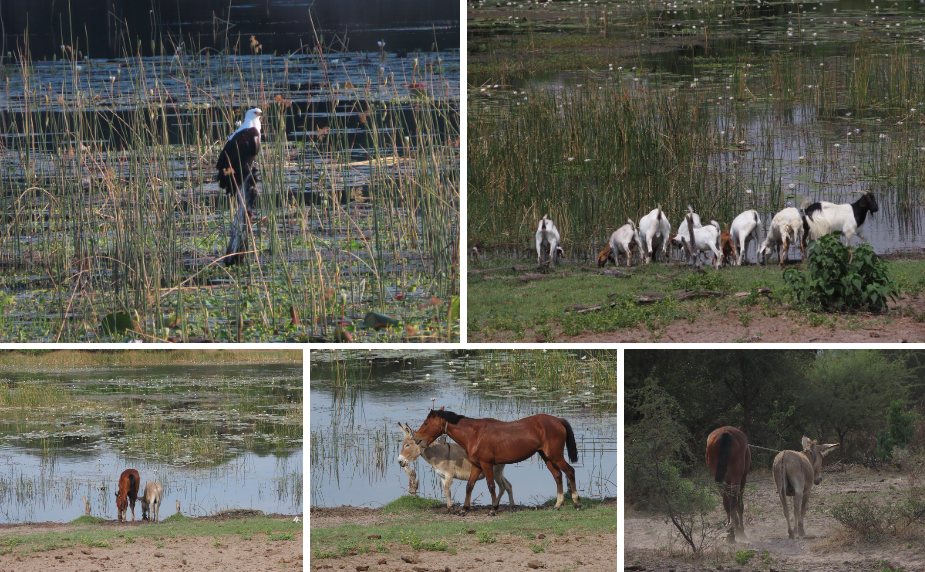
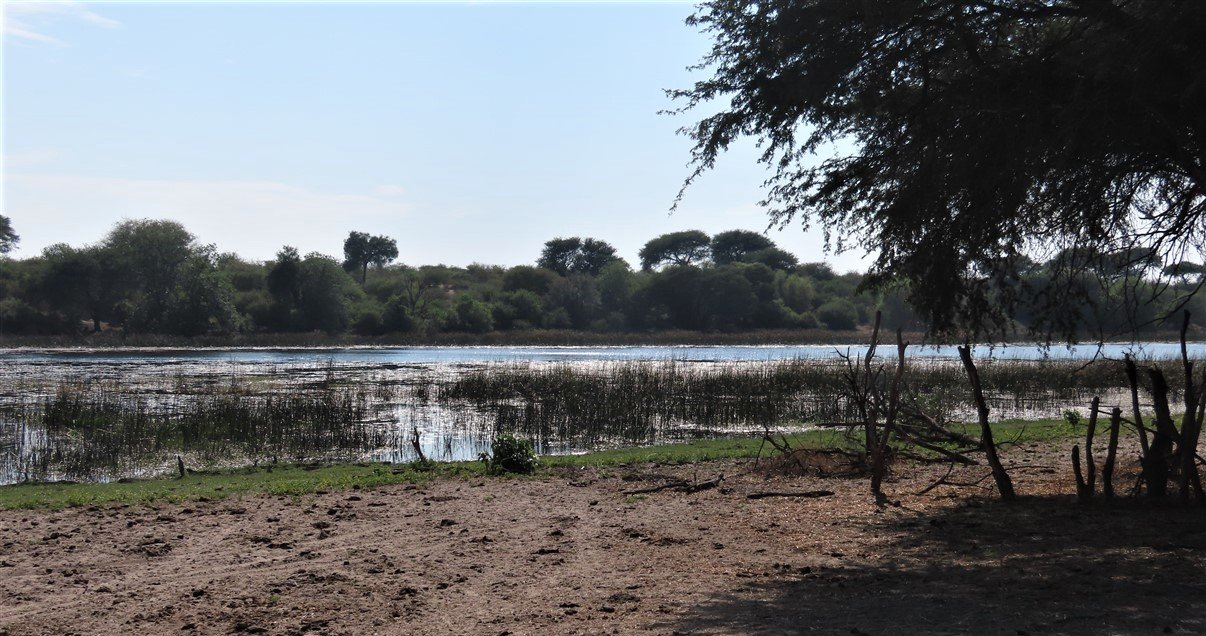
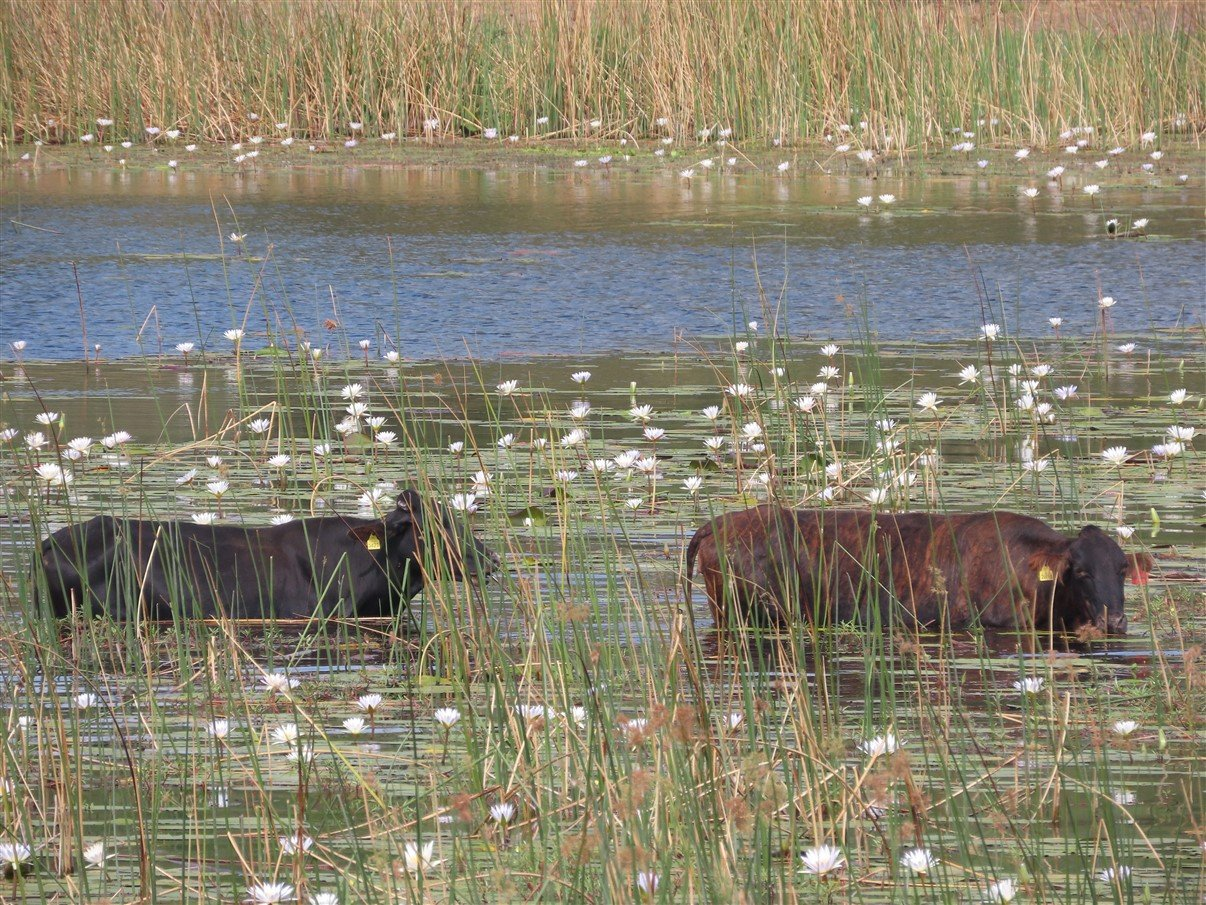
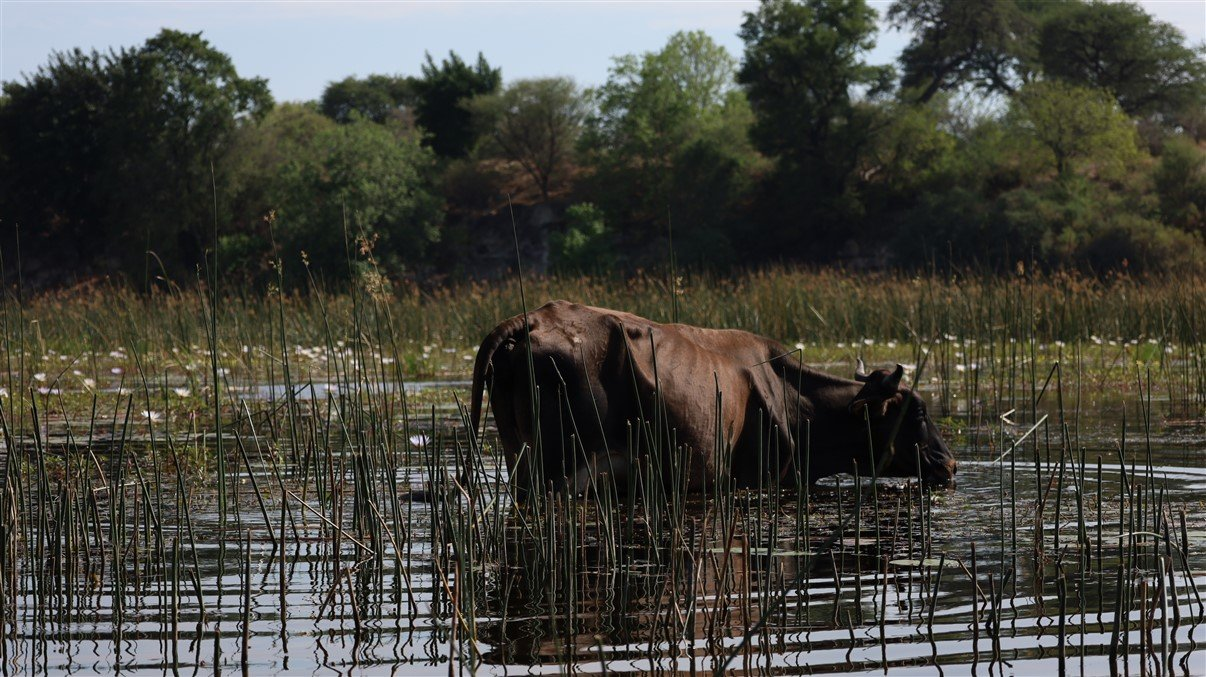
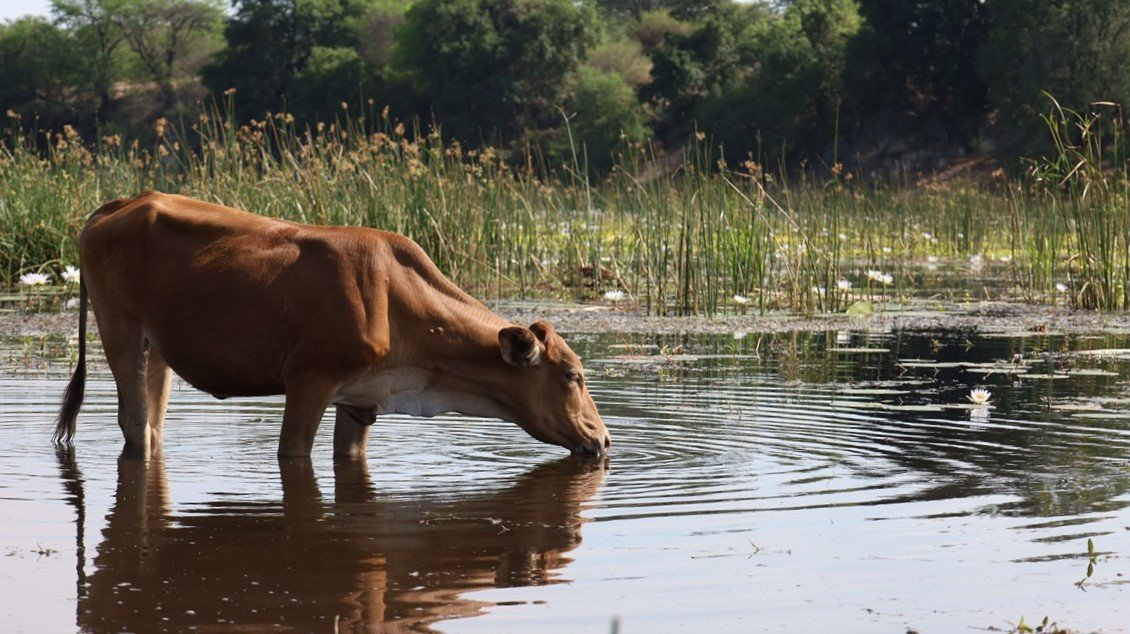
After our morning coffee we continued and aimed for Nata, where we filled up with diesel. We continued south and then west to the salt works of Sowa on the Sua Salt Pan, part of the greater Makgadikgadi National Park.
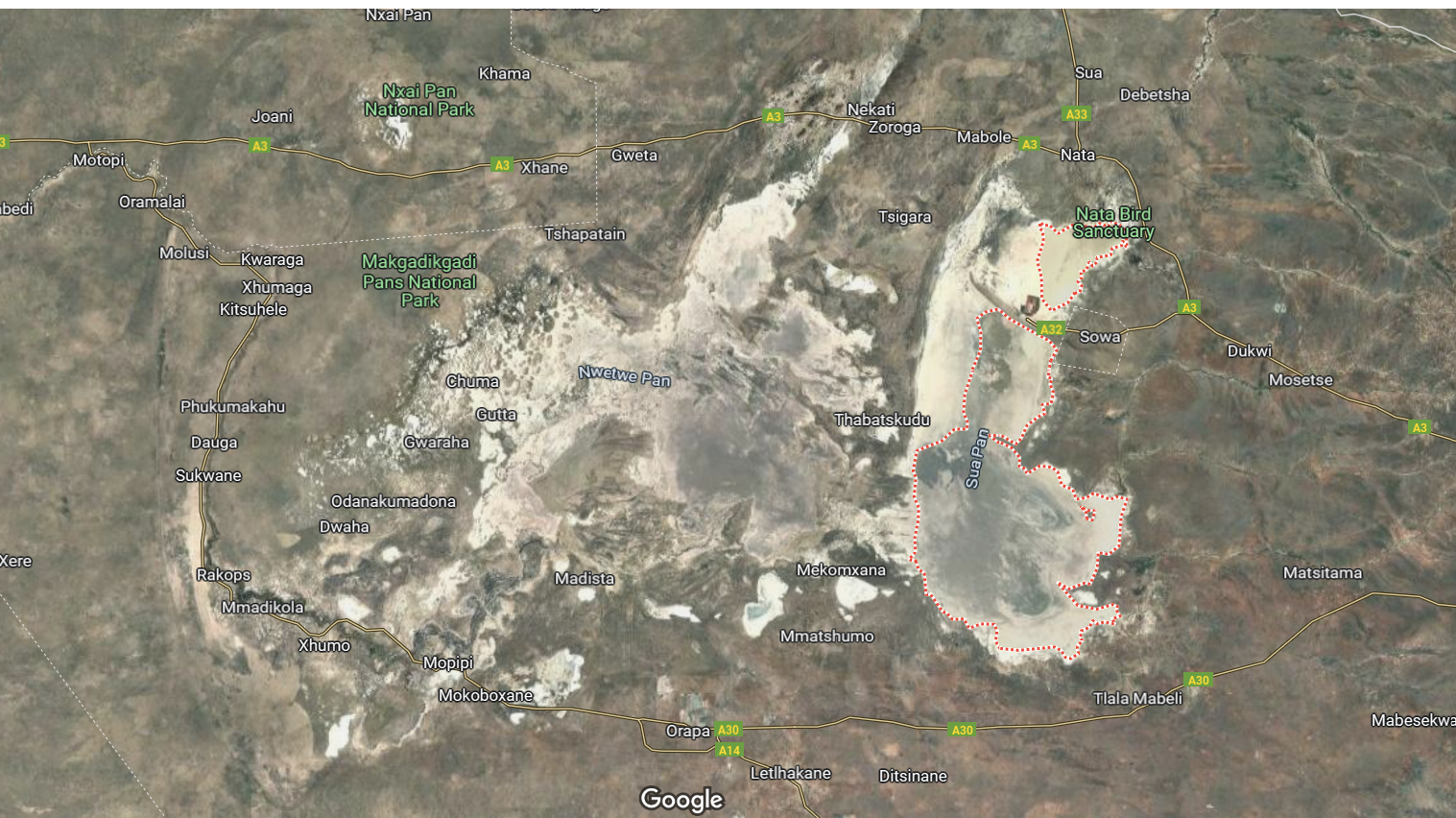
Driving this road reminds you again and again that wild life in Botswana is free roaming: we saw one elephant who seemed to have been busy destroying concrete lids of water reservoirs along the road.
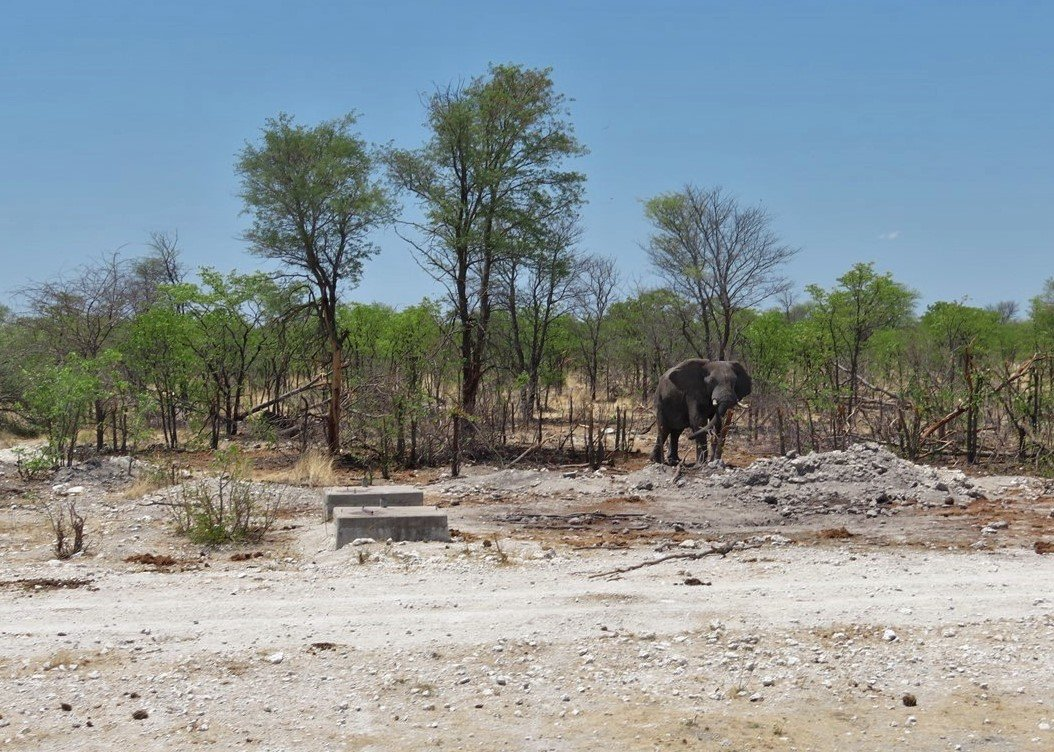
We arrived at the gate of the salt works and chatted with the guard at the gate who informed us that random people normally cannot just visit the plant. He called someone on the phone to explain that we were one of those random visitors who would like to see the salt works and we were told to wait.
Another guy arrived 2 minutes later and after a chat to figure out our motives, he allowed us in…under the condition that we would not stop anywhere and he would be following us all the way. If that were the conditions to have a sneak peek at the plant we gladly abided by them and off we went. We drove on the tar road towards the plant through a natural bush area with the odd buck seeking shade under the trees. As we came closer, we could see the massive plant and the shimmering white mounds of salt set against the pink waters of the salt lake. We came to the end of the road and- without stopping as we were instructed- returned to the gate. A very quick tour of the Sowa Salt works at Makgadi Salt Pan!
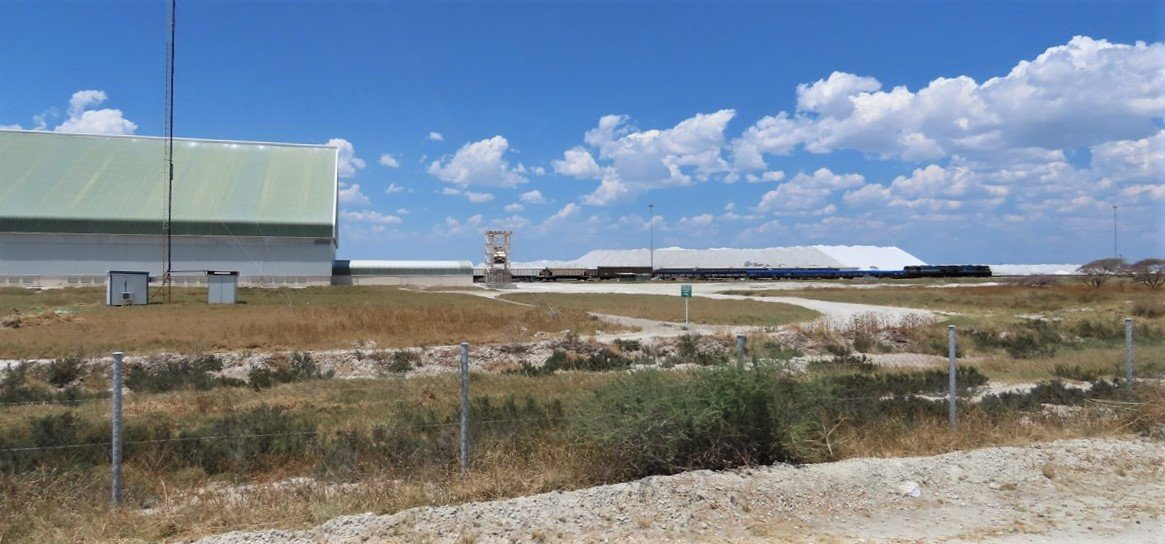
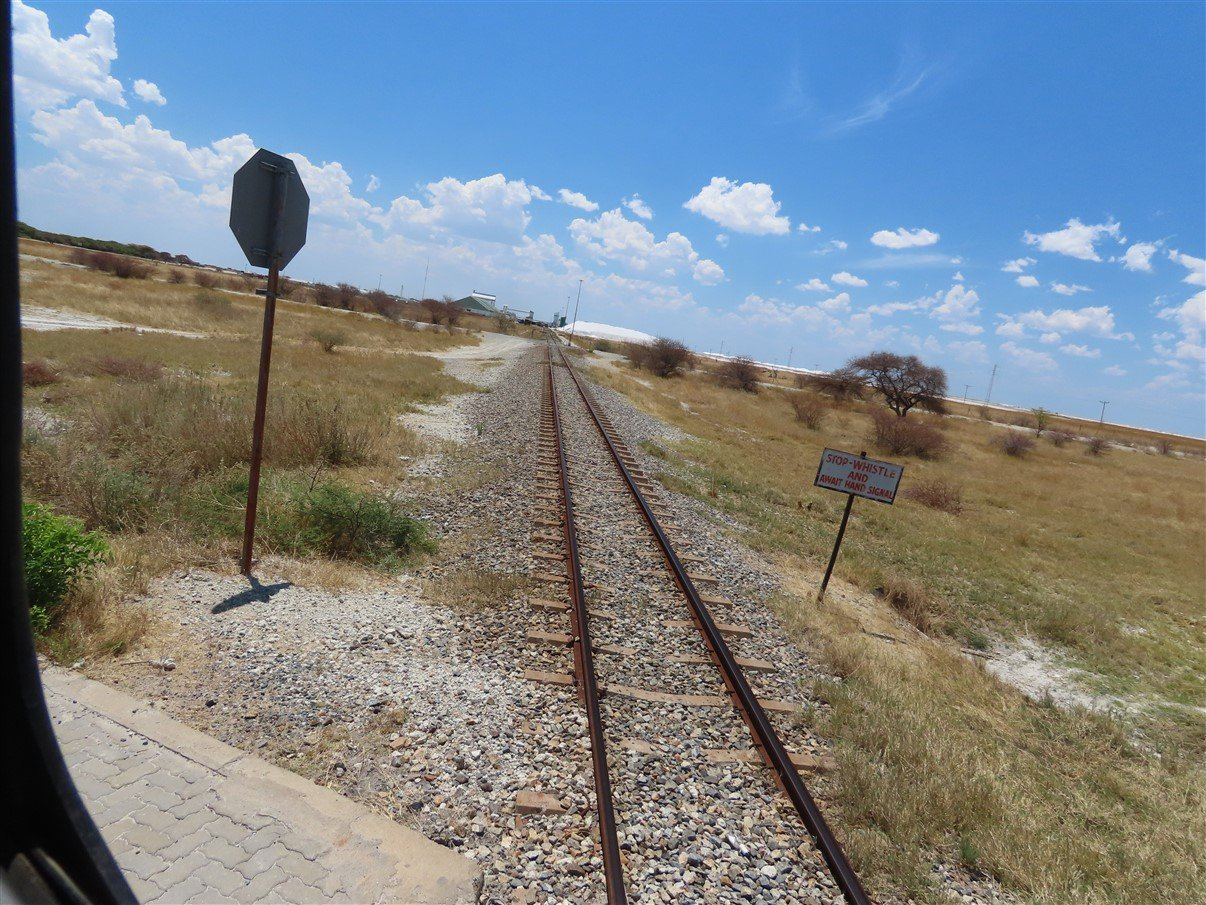
Seeing that this visit eventually turned out way shorter than what we had anticipated, it left us to much more time to start driving south on a gravel road running parallel to the Sua Pan.
Our GPS kept us fairly well on a track that slowly changed from a reasonable 2 car gravel road to a 1 car dirt road winding its way through denser and denser mopani bush. We passed a settlement here and there and at one spot we actually had to ask for directions, because even our Miss GPS couldn’t find the right path in the confusion of crisscrossing paths and tracks in the bush. After a chat with some local residents we found the right way again and trudged our way farther through the bush. By then our end goal was to reach the edge of the saltpan and see if we could cross over to Kukome Island (the red dotted island on the map).
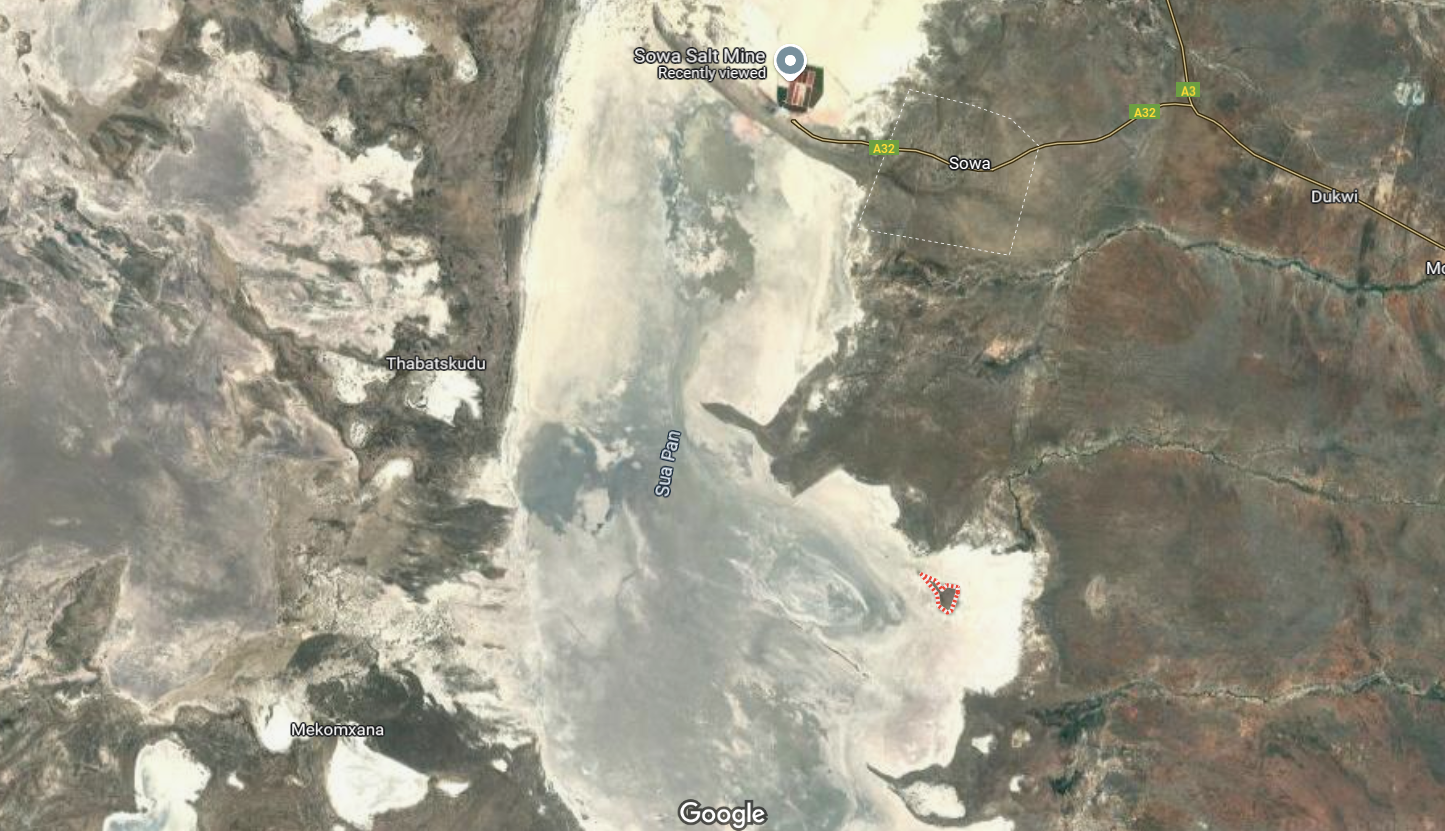
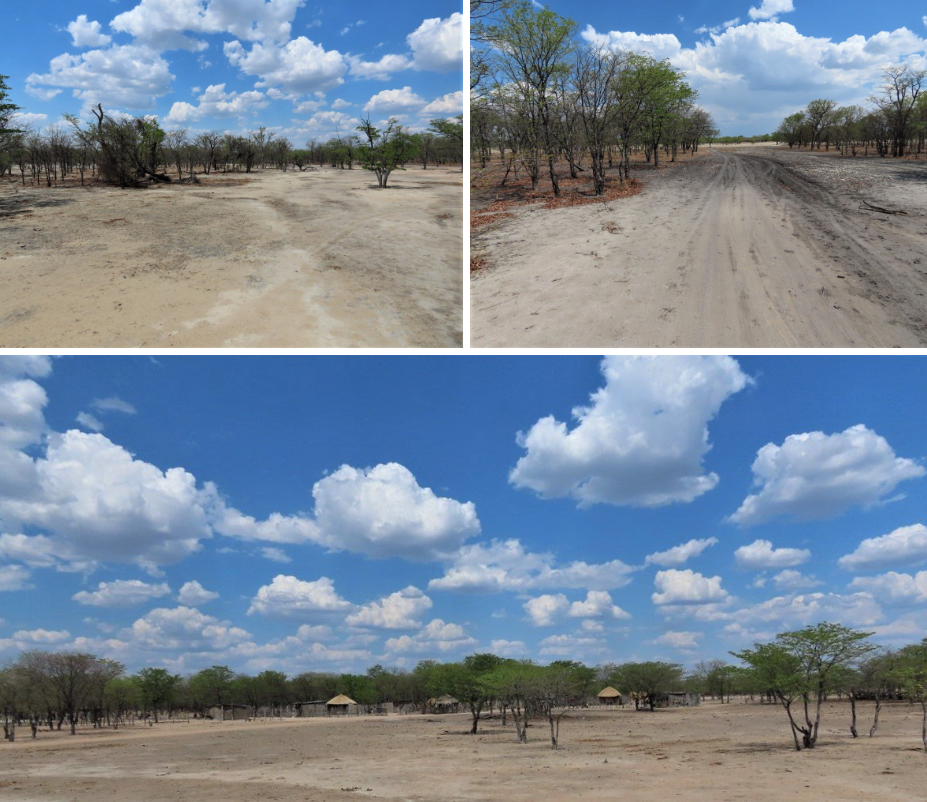
Scratching our way further and further through the bush, at one particular moment we came across an open plain in the bush with a sizeable corrugated dam on the side. We could see some cattle pens and a water pump. But we also saw heaps of elephant dung! As it was late afternoon by then, we decided that this might be as good a place as anywhere else to park and we hoped to see elephants. Shortly afterwards a few guys arrived on bicycles and when Stefaan chatted with them they explained that they were switching on the pump to fill the dam for the cattle, but that indeed elephants would come to drink there too!
When they left, we waited patiently but saw nothing. We kept quiet and didn’t switch on lights and just as it became too dark for us to read, we looked out … and there they were…. a handful of elephants had walked up to the dam so quietly that, even in the total silence of the bush, we hadn’t heard them coming! Unfortunately by then it had become pretty dark and although we could see them, we couldn’t see them clearly. A short while after the elephants had disappeared in the bush again, a bakkie stopped and wanted to make sure we were ok. After a chat with the farmer, we understood that even in this remote bushland, farmers are wary of poachers. He left and we went to bed, hoping for more elephants in the morning.
And man… were we lucky! Stefaan woke up early and saw a few hovering around the dam. By the time I woke up a bit later it had turned into a party at the dam with elephants and cattle jostling for position to drink! It was interesting to see, even when elephants might be used to seeing bakkies and other “normal” vehicles, that they are very wary of our Trokkie. We’ve experienced it in various other game parks: the elephants are curious about this “big white thing”! Here it was no different: while most of the herd was splashing around and drinking, there was always one of the adults standing on guard and keeping an eye on us!
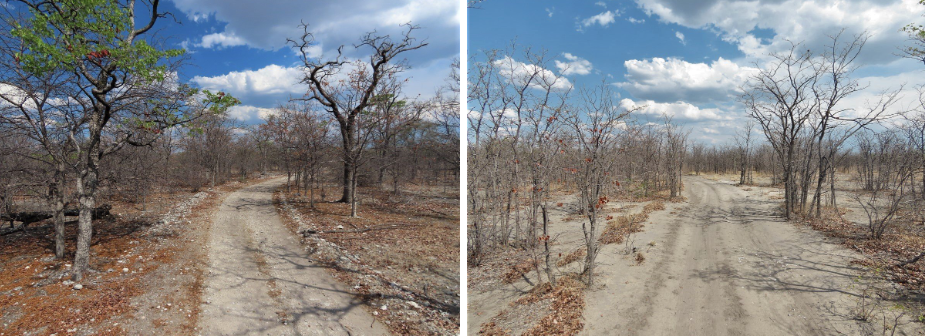
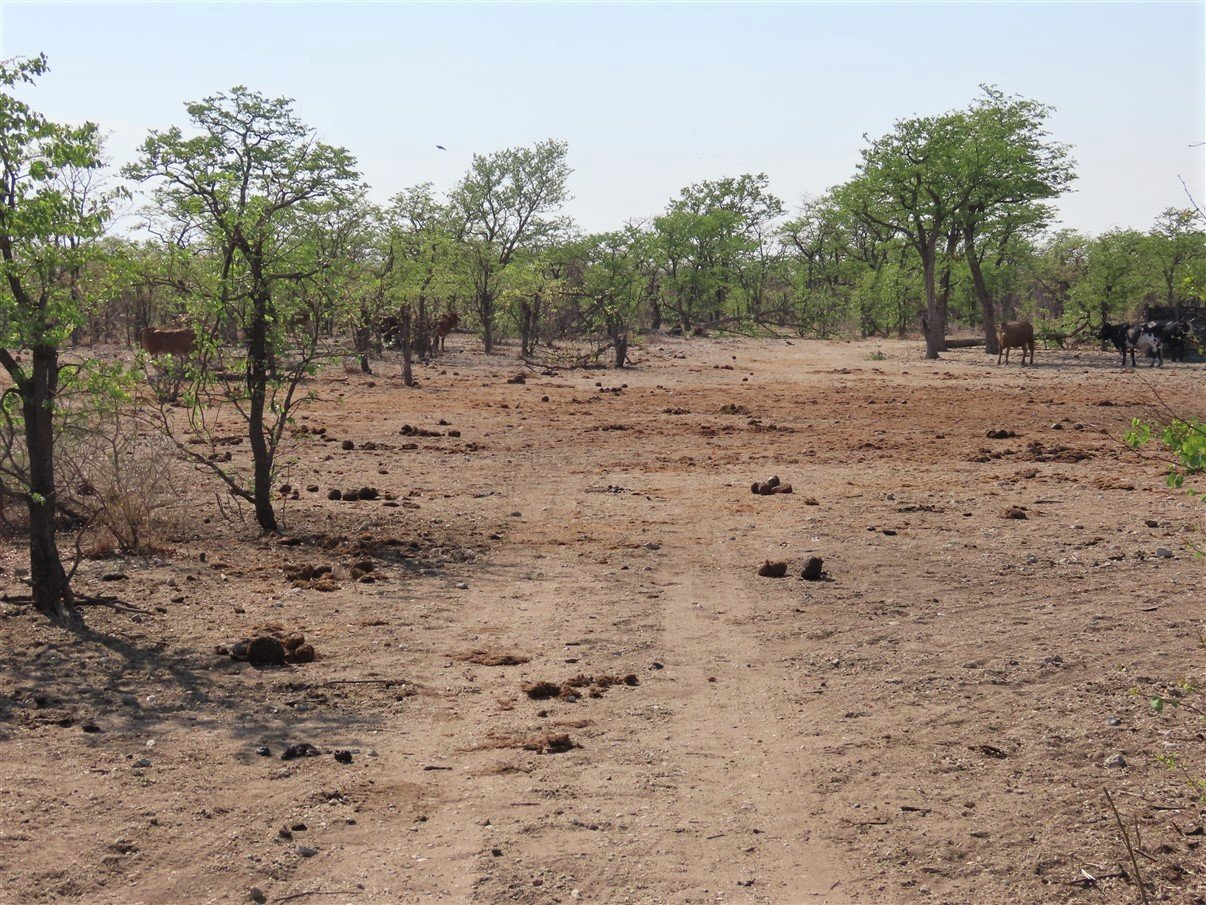
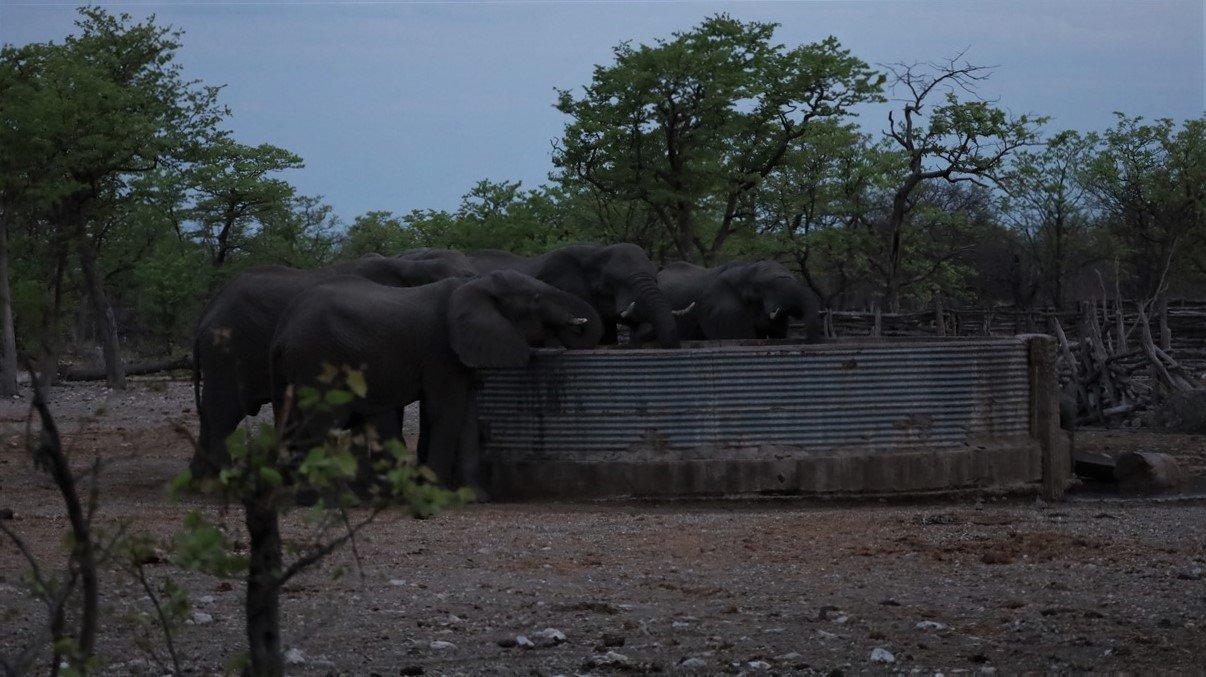
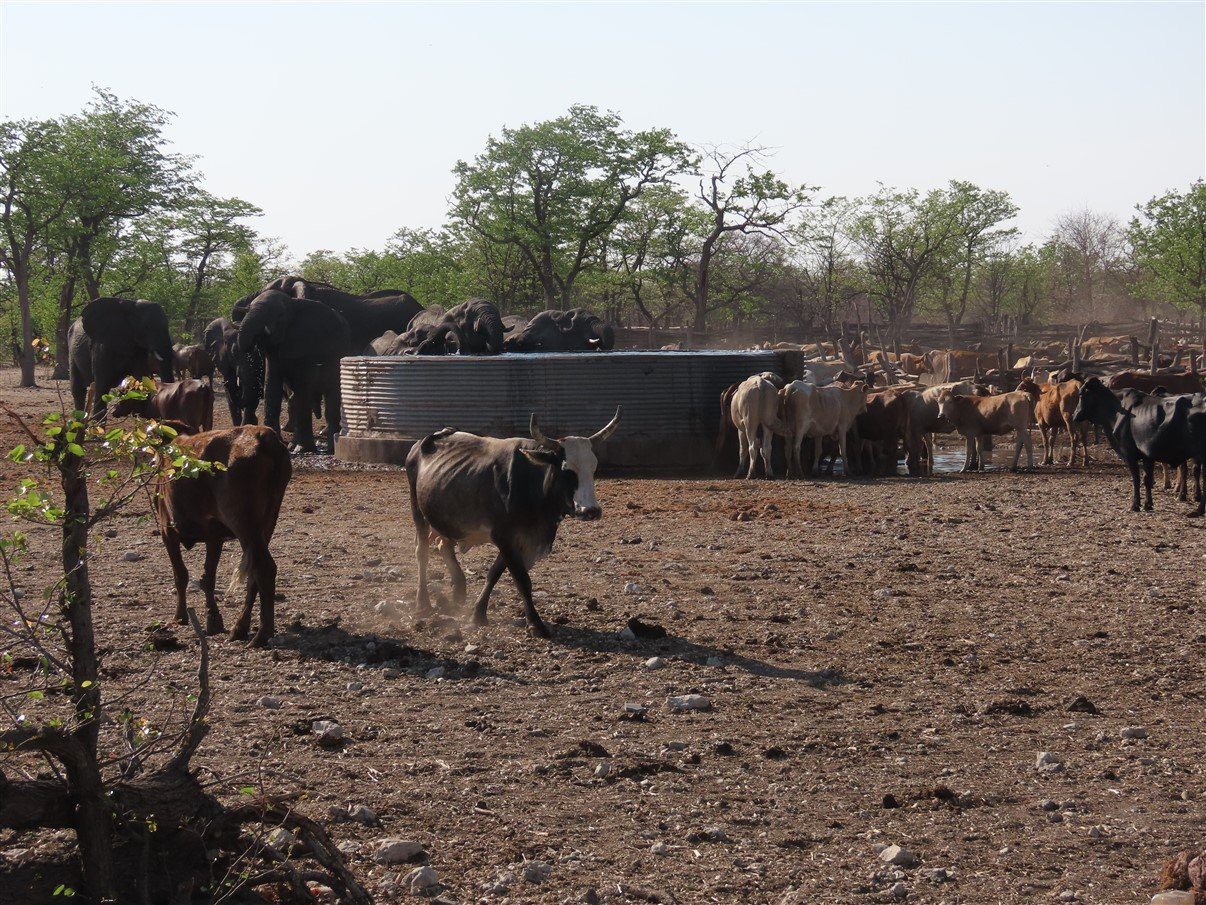
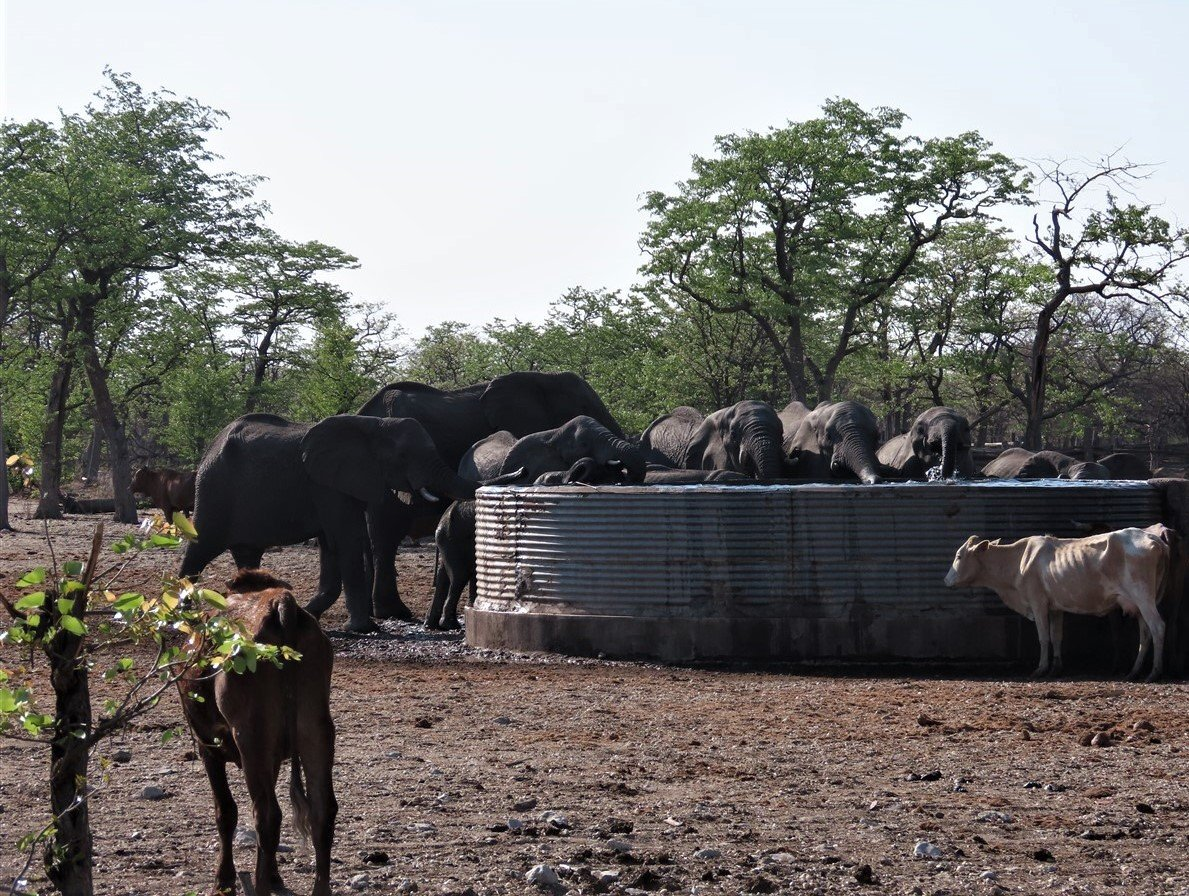
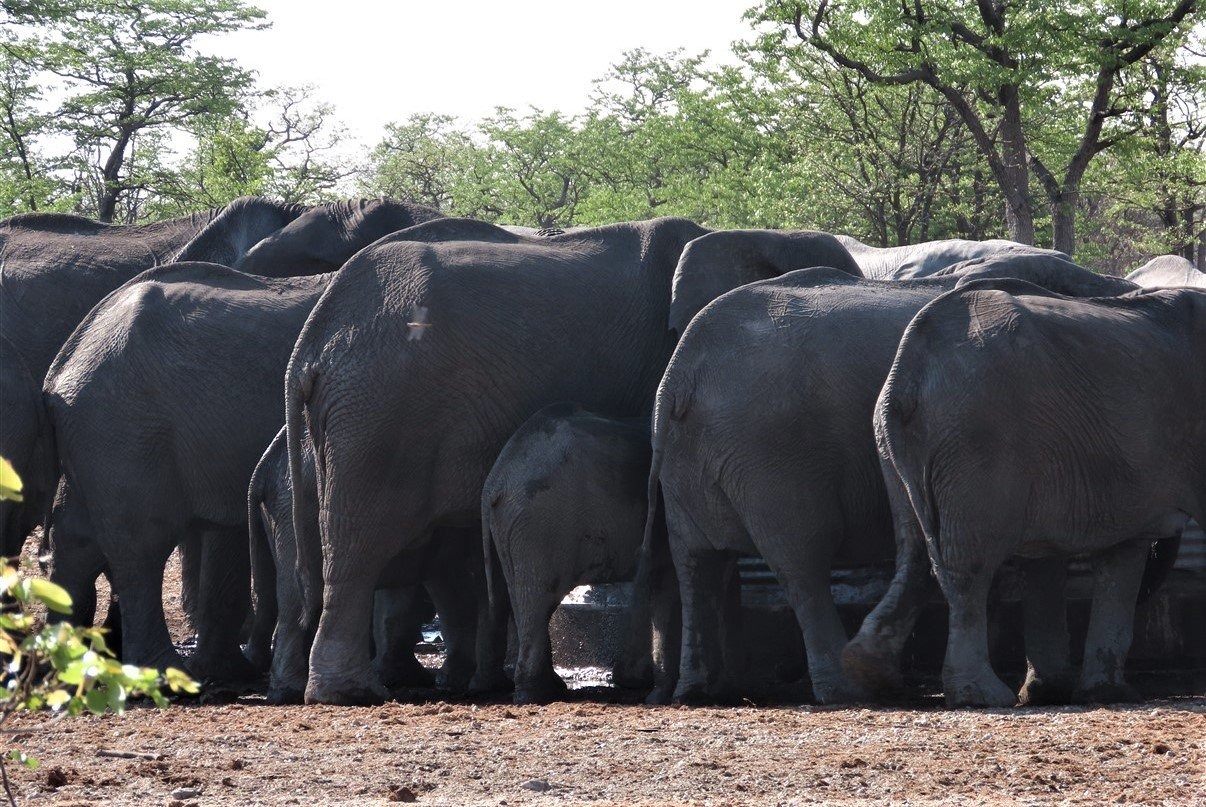
After this very special start of the day, we packed up and continued to Kukome Island. We worked our way through a few more kilometers of mopane bushland and eventually left the bush behind and started seeing the white glaring plains of the salt pan.
We turned off on a dirt road that we presumed would take us to Kukome Island as there was no signage indicating so!
And all of a sudden there it was: Sua Pan in its vast sparkling white glory, with Kukome Island etched out against the blue sky!
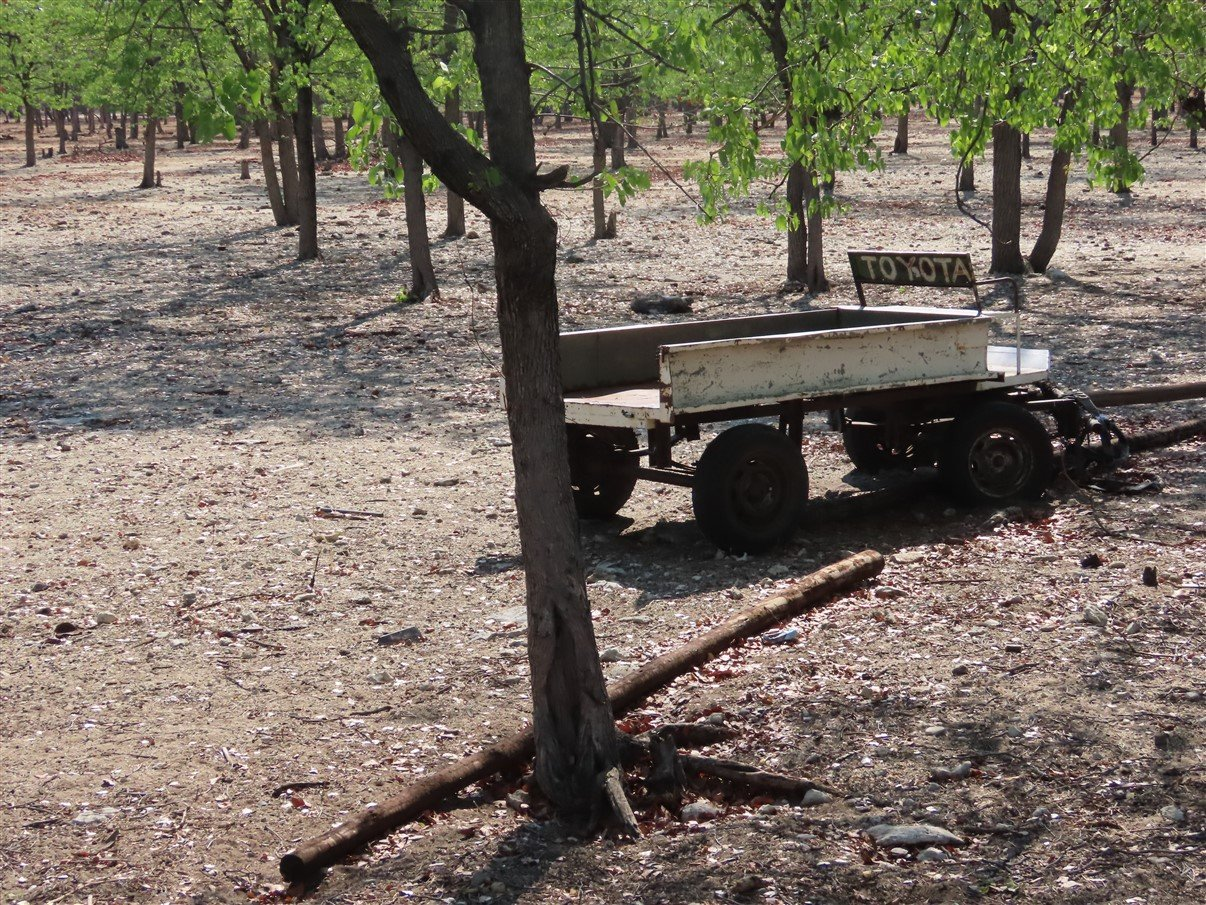
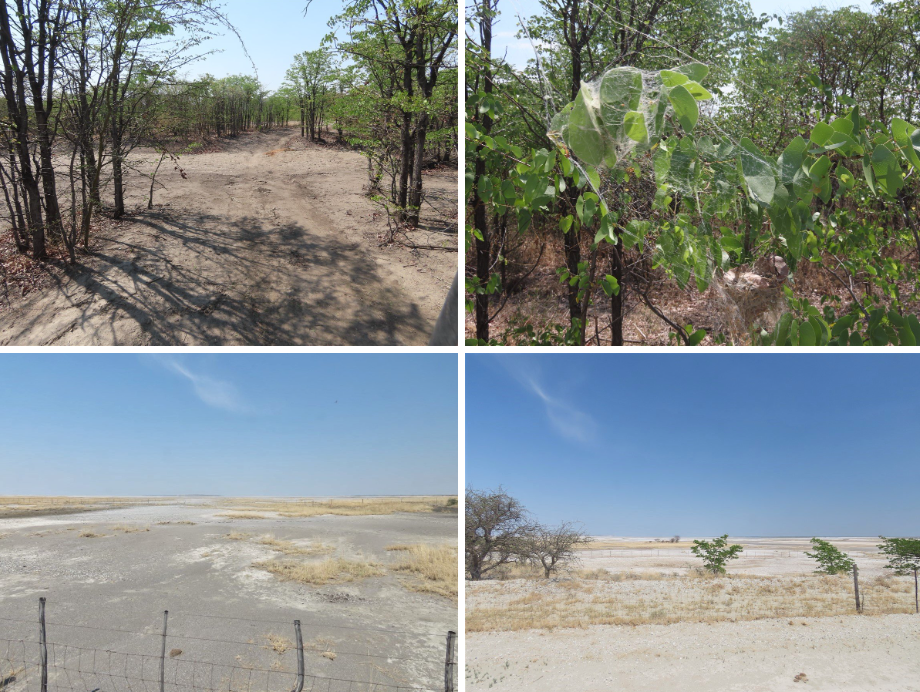
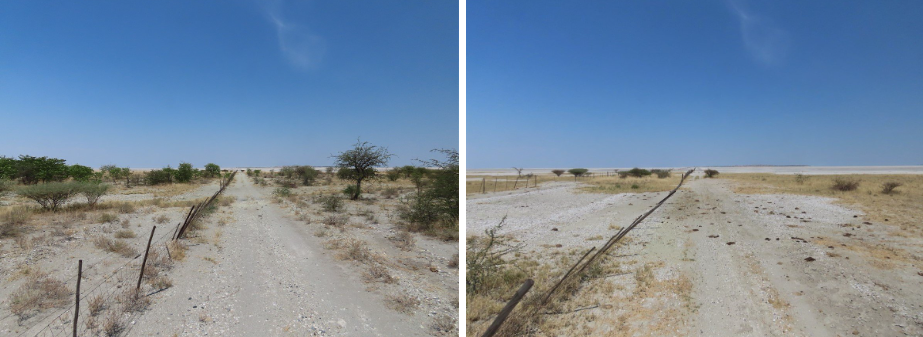
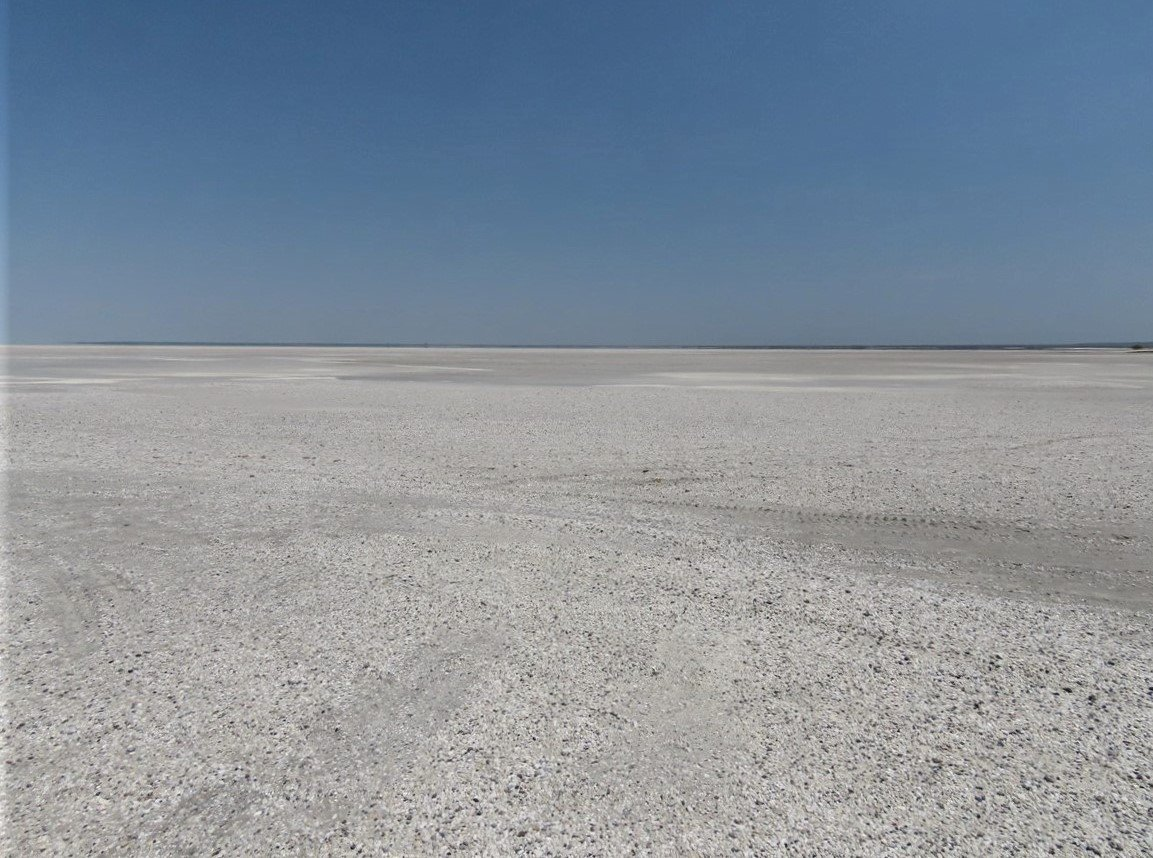
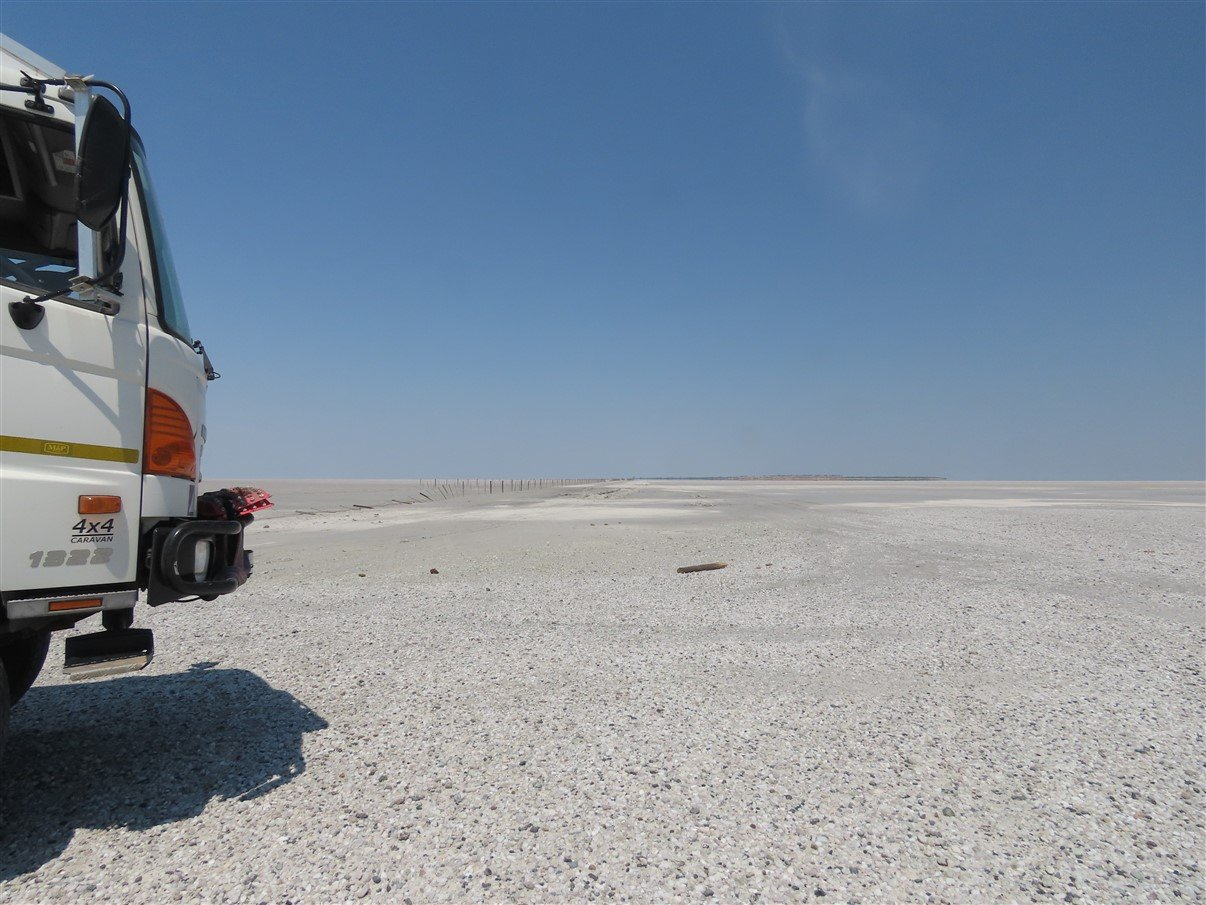
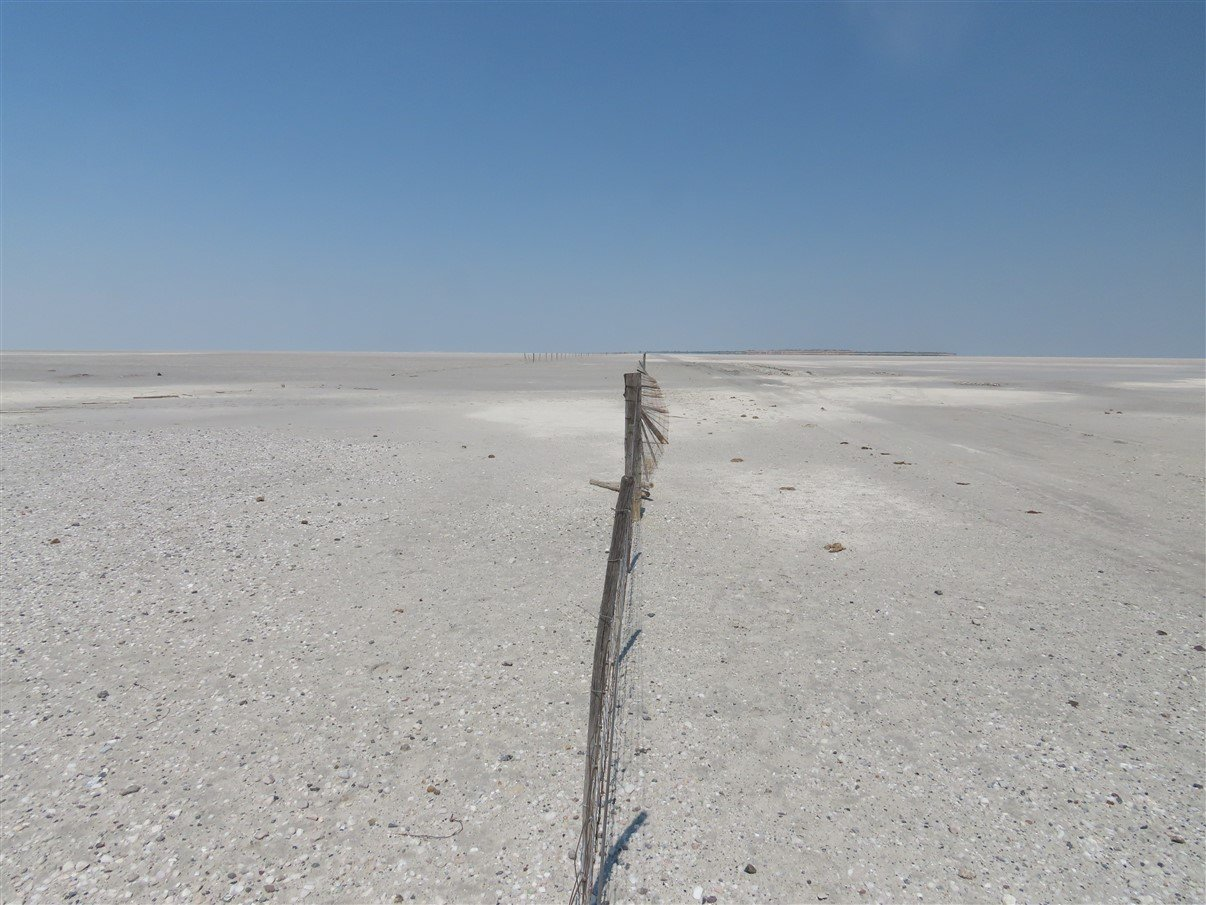
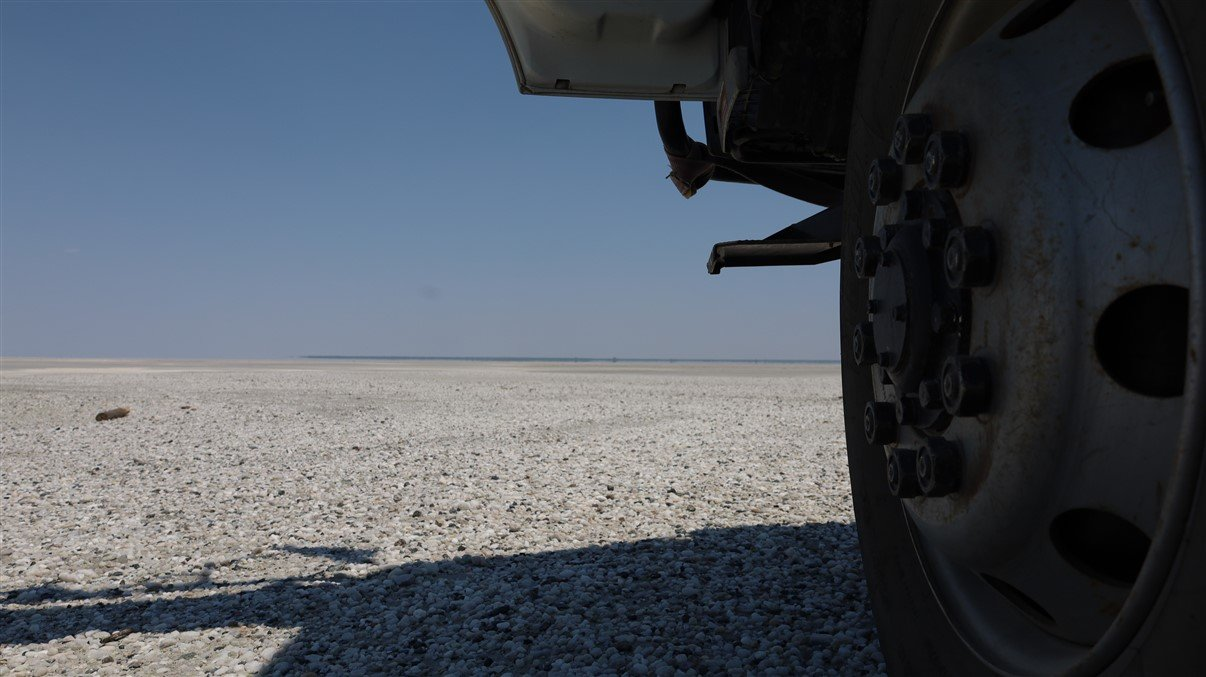
We took our time to enjoy a cup of coffee while admiring the wide crispness of Sua.
We could see a path running towards the island and we ooh'ed and aah'ed if we would give it a try. But first impressions can be deceiving and (again) while we thought that part of the track looked hard and solid… it wasn’t! You guessed it: after only the first few meters we cracked through the dry surface. Lucky Stefaan decided to use the sand tracks before even attempting a forward/backward manoeuvre and low and behold: we got out in about 11 minutes: about 10 minutes digging to get the sand tracks well positioned and 1 minute for Stefaan to drive out. Great stuff!
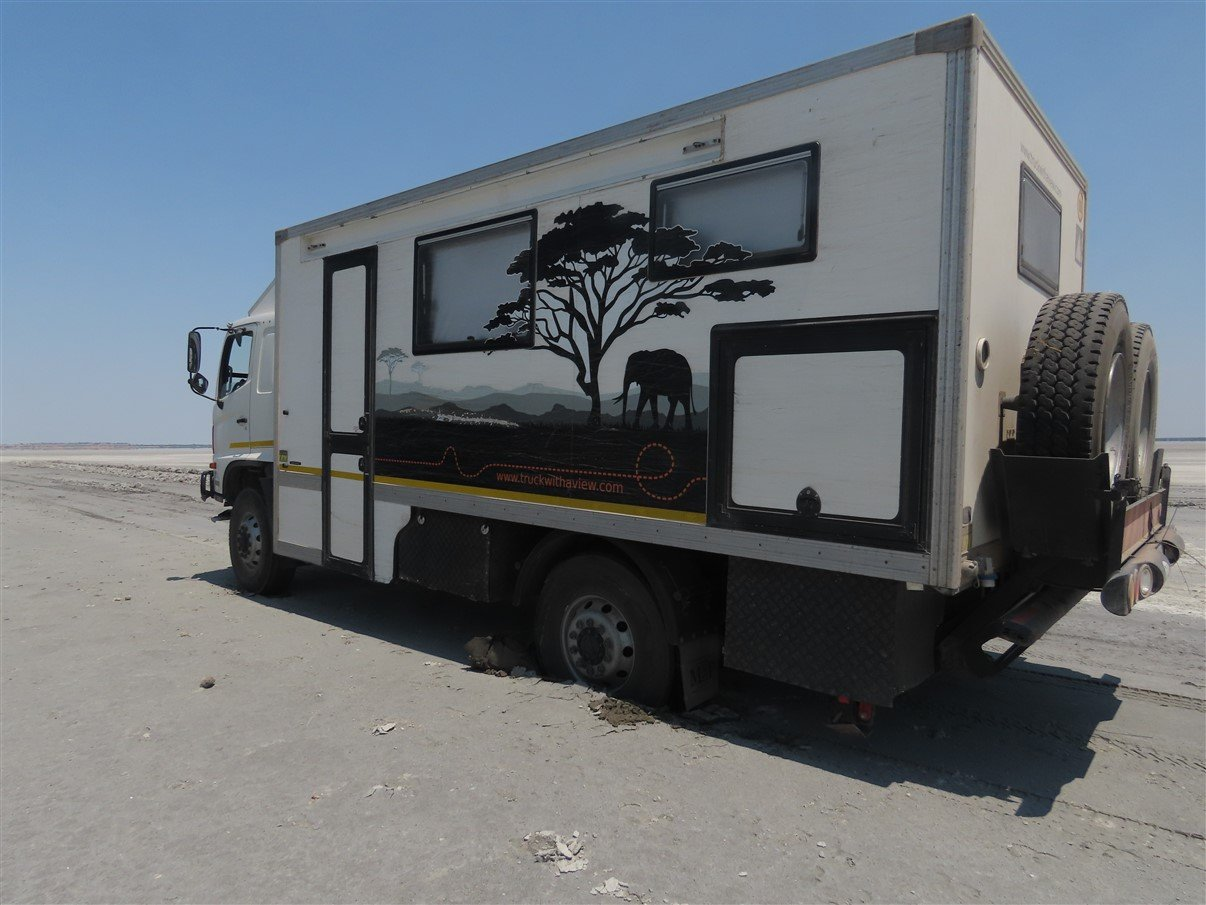
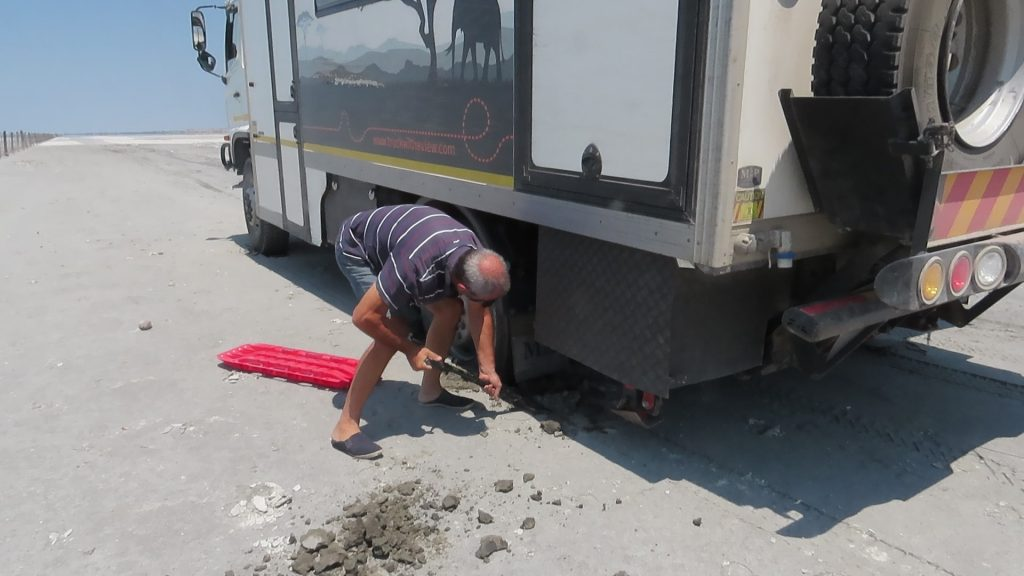
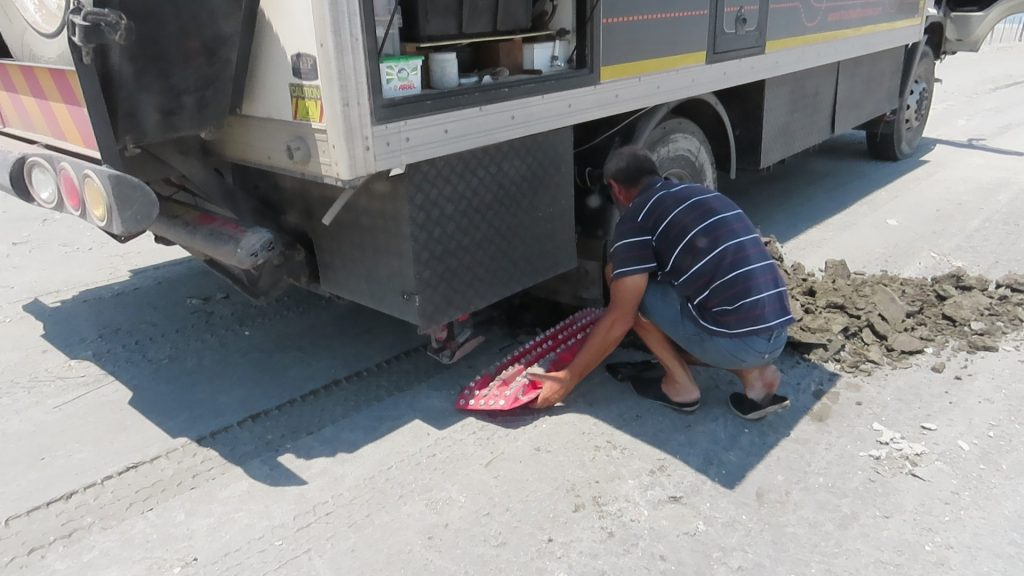
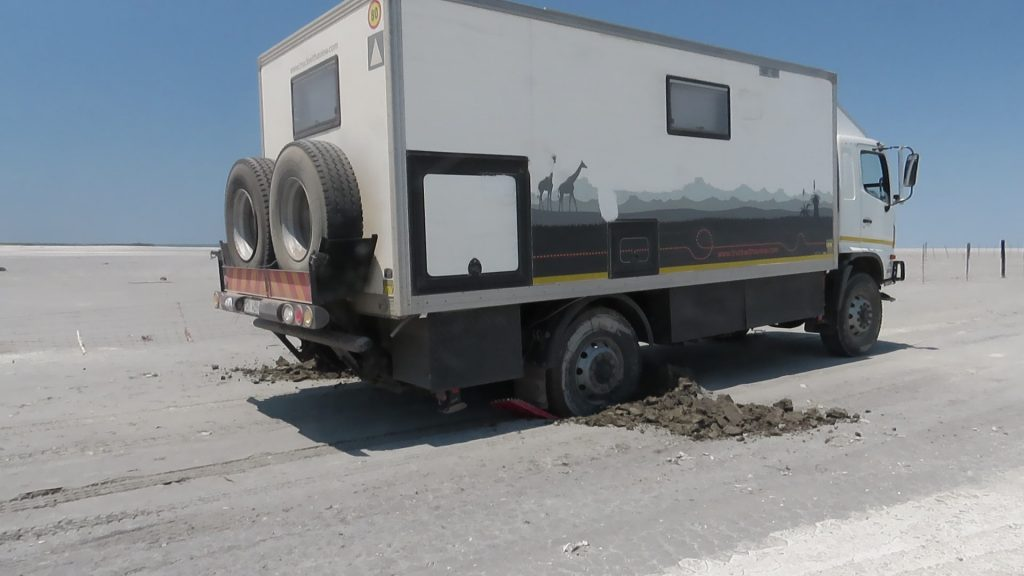
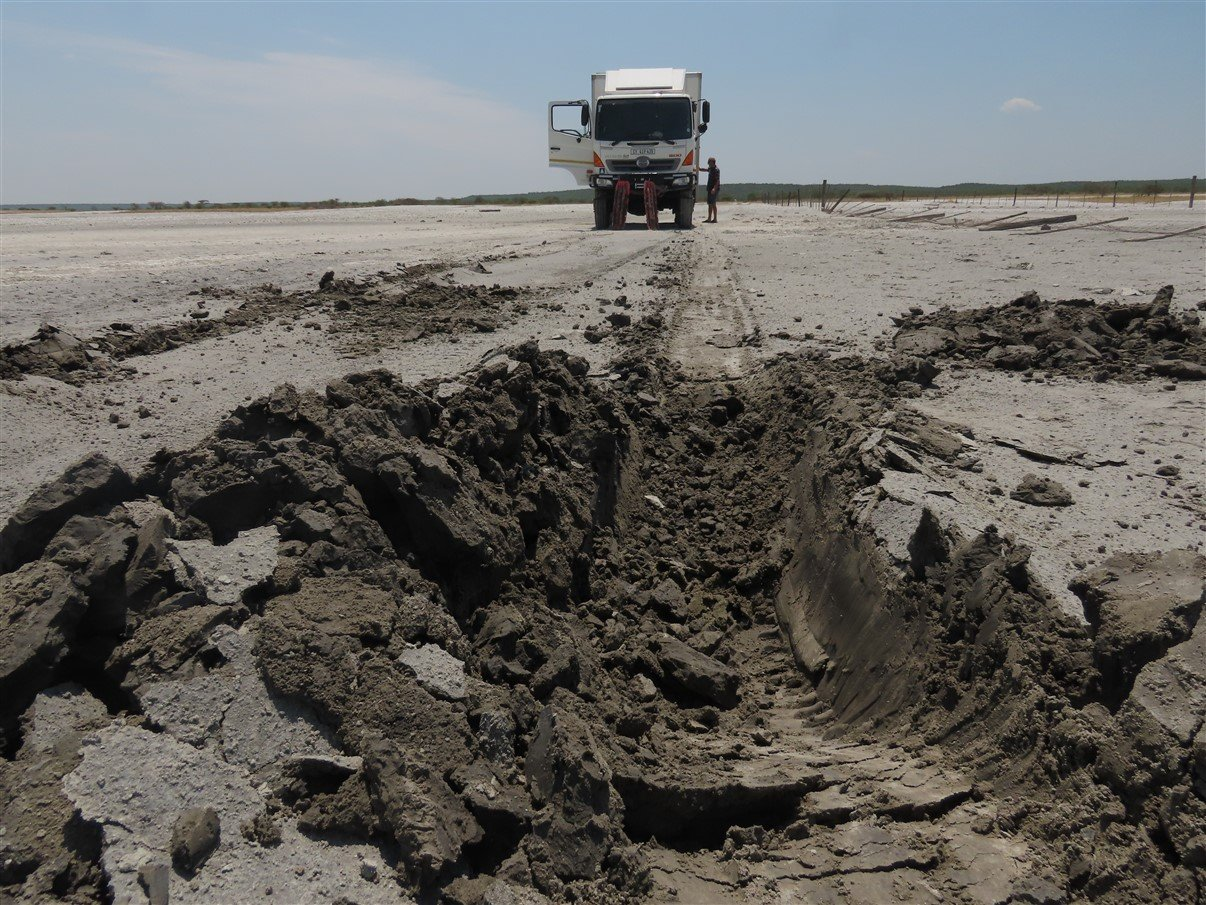
That was to be our last adventure in Botswana. We left the pan took the main road to Palapye where we would get our PCR test and go back to South Africa.
For more photos, clips and videos follow us on


Boteti River, saltpans and elephants